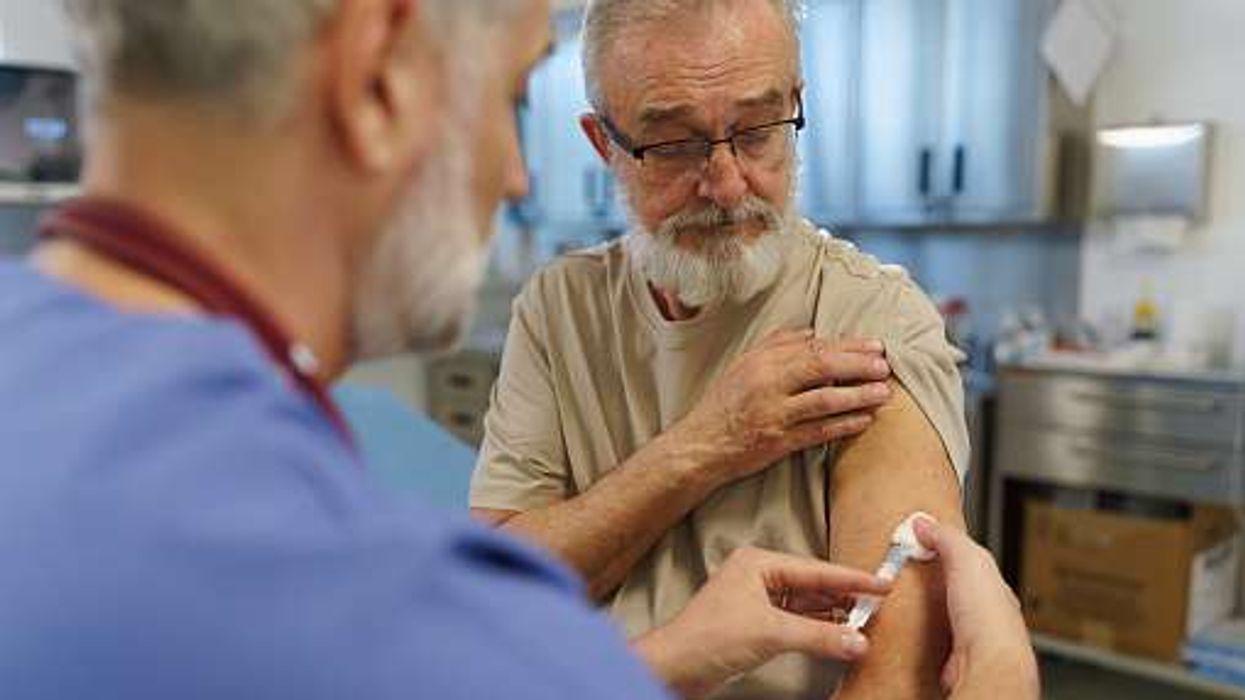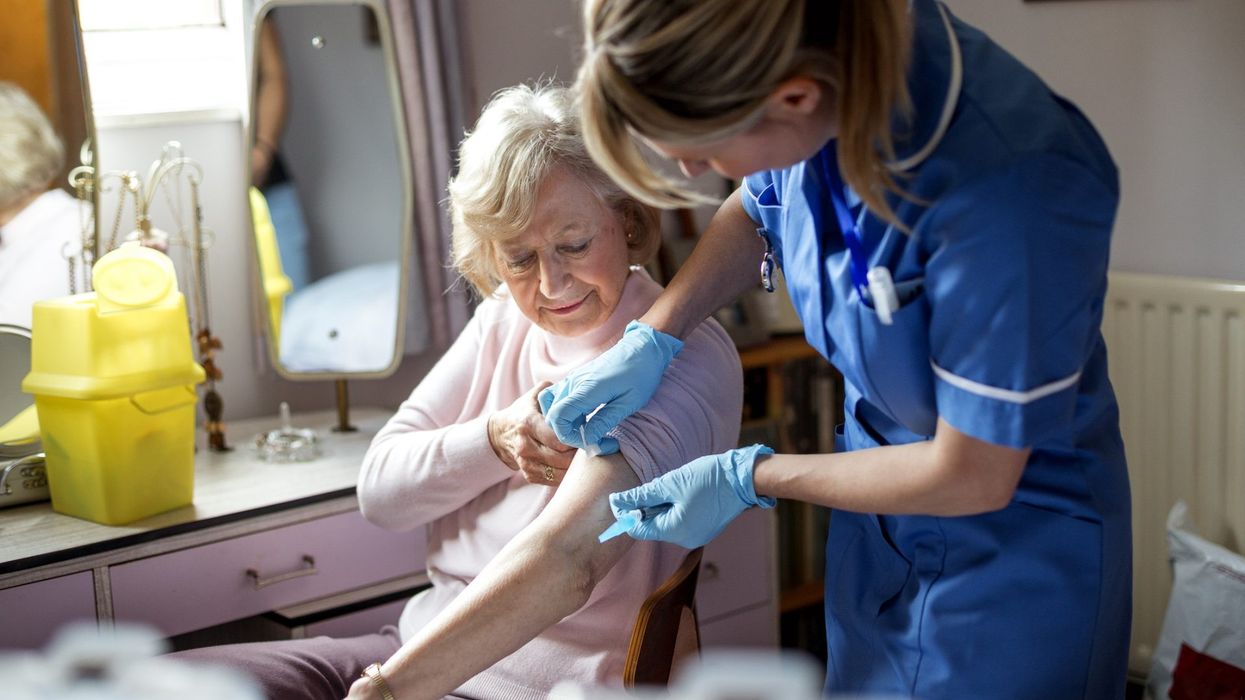By Dineshwori Longjam
Pritee Panchmatia has been pharmacist for over three decades. She reveals the secret to her success which saw her recognised for excellence in patient care award at the Pharmacy Business Awards.
Embracing technology is essential for improving work efficiency and patient safety, but investing in staff training and development is just as crucial for running a successful business – said Pritee Panchmatia, superintendent pharmacist and director of Howletts Pharmacy.
Her commitment to this balanced approach earned her the Patient Care in Pharmacy Award at the Pharmacy Business Awards 2024.
“If I'm implementing a new technology, I want to make sure that I've utilised my extremely brilliant team in the right direction,” she told Pharmacy Business.
“It’s always about striking a balance—managing costs without losing the people who are actually driving the services forward.”
“Because no IT system, no robot is ever going to provide the care that the team is providing.”
From locum to leader
Panchmatia qualified as a pharmacist 32 years ago and began her career with Boots, where she served for three years before leaving to work as a locum.
In 2004, she bought her first pharmacy in Stevenage from her retiring uncle. She later sold it, but continued managing it until 2011 to focus more on her children.
In 2015, she acquired Howletts Pharmacy, laying the foundation for Cheerglow Limited. Three years later, she entered a partnership to expand the business, acquiring Webber Pharmacy and Southcote Pharmacy. A recent demerger saw Panchmatia retain Howletts and Webber while her former partner kept Southcote.
Her pharmacies offer a broad range of services—from NHS initiatives like COVID-19 and flu vaccinations, Pharmacy First, contraception, hypertension case-finding, and smoking cessation, to private PGDs such as ear wax removal, travel health and weight management.
Panchmatia revealed that Howletts Pharmacy has also recently collaborated with Hillingdon’s Harefield Hospital to provide atrial fibrillation (AF) checks.
Pharmacy ownership: Lessons learnt
Panchmatia said that being a pharmacy owner is a completely different experience from simply working as a pharmacist—requiring business acumen, leadership, and team development.

Sharing her ownership experience over the years, she said: “I've learnt a lot over the years of how best to implement the skills that my team can bring to the table as well.”
“Pharmacy has changed a lot as well - we've gone from mainly focusing on dispensing and the pharmacist being the one going out and giving advice to actually the whole team being involved in giving advice, carrying out services and helping to push healthcare, knowledge and needs for the community.”
“I think my biggest learning from it has been that you can't be effective on your own. You have to have a good team, and to have a good team, you have to invest in your team, invest in their training and develop their skills.”
Leveraging technology to improve care
Asked about the initiatives she has introduced in her pharmacies that led to enhanced patient care, Panchmatia highlighted the implementation of the Titan PMR system three years ago, which has significantly reduce medication errors and freed up pharmacists to focus on clinical care.
“With this system in place, our medication errors have gone from one or two every six months to zero,” she said.
“It has allowed us to focus more on clinical checks rather than spending time on accuracy checks, ultimately improving patient care.
“It has also enabled us to run more clinics without needing an additional pharmacist, reducing costs while maintaining safety.”
Her pharmacies also use AccuRx, which has not only helped them go paperless but also made communicating with patients and surgeries easier and quicker.
Additionally, Panchmatia has introduced a digital payroll system, significantly reducing the administrative workload involved in managing staff reviews, timesheets, and holidays.
The other thing that's made a big difference in improving efficiency and patient safety at their pharmacies is the implementation of PharmSmart.
“We use its various modules, including the electronic CD register, which has made maintaining accurate records, keeping a clear log, and reading other pharmacies handwriting easier.
“All our standard operating procedures (SOPs) are now hosted on PharmSmart, allowing us to track which staff have read them and who still needs to. We also log near misses and patient safety incidents there, creating a transparent, accessible record for the whole team.”
Panchmatia emphasised the importance of training staff to use these systems correctly because “only then do you see the benefits.”
“You have to invest that time in ensuring, first of all, that your team knows the correct protocol, and then, secondly, that they follow it.
Panchmatia shared some key practices they follow to monitor and improve safety at their pharmacy:
1. Preparing for any new services in advance, setting protocols, and holding a team briefing before starting the service. This includes services we have done before, but with a new campaign or a change, such as the Covid booster programmes, flu season, etc.
2. Upskilling staff and ensuring they receive ongoing training.
3. Weekly team meetings (15-30 mins) to catch up on how the week went, what worked, what didn’t work, what improvements we can make, and to set the agenda for the following week.
4. Maintaining an open culture, encouraging staff to discuss their concerns and participating as a team in how we work and how we can improve.
5. Sharing all positive feedback with the team, but also analysing and learning from any negative feedback.
6. Reducing pressure by creating appointments for most patients so that we can see them at a time that is more convenient, allowing us to prioritise tasks more efficiently.
7. Not becoming complacent and fully relying on IT systems – they are a tool to help manage workload and work more safely, but should not replace human input.
Pharmacy challenges
Despite the success, Panchmatia acknowledged that her pharmacy is not immune to the challenges faced by pharmacy teams, such as medicine shortages, which she said consume a considerable amount of her team’s time and create financial strain.
How do they deal with the problem? “Wherever possible, we try to liaise with GP surgeries to suggest alternatives and we always keep the patient in the loop as well, because if they do not know what’s the issue, and then they start worrying, and that just adds to the pressure on us as well, because they they're likely to take that frustration out on us,” she said.
However, she said that a lot of their time is spent managing this issue, which not only takes up valuable time but also results in financial losses, as they often end up buying medicines at prices higher than the reimbursement rate.
She urges the government and the NHS to address the issue, warning that continued financial strain is contributing to the closure of many pharmacies.
Panchmatia believes pharmacists should be empowered to make minor prescription adjustments during shortages, but with a robust system in place to ensure consistency across all pharmacies.
“Because ultimately, if we do switch, the onus does become on us. We are clinically trained to know what the alternative would be, but in more complicated cases, pharmacists will need guidance on what alternatives they can offer to ensure the same standards are met at all pharmacies.”
She also emphasised the need for Serious Shortage Protocols (SSPs) to be issued sooner, rather than waiting “until the problem is so huge that people are left without their medication.”
Pharmacy First: Promise and pitfalls
Panchmatia expressed strong support for the Pharmacy First service, but raises concerns over its heavy reliance on GP referrals, which hinders its effectiveness.
“We need to move away from pharmacies being forced to rely on surgeries. We are a profession in our own right, and we have a lot of clinical knowledge.”
She revealed that, apart from the first month, her pharmacies haven’t met the Pharmacy First consultation targets.
“Among our three pharmacies, the Hillingdon branch has the lowest referral rate from GPs. I’m lucky if we receive five or six in a month.”
“We’ve recently gone through team training to try and push the walk-ins, but even then, we might only reach 15 cases this month. That’s with the team working so hard to push it as much as they can.”

She suggested giving pharmacies a better remuneration for walk-ins, rather than a flat £15, or making it easier to pass the gateway criteria.
“Sometimes, you can spend 15 minutes with a patient only to discover they don’t even pass a gateway. But you need to spend that time with that patient to make sure you cover all the points and see where they're at and what treatment they need.”
“If it doesn't fall under the gateway, we should be able to claim it as a minor illness because we're still spending time with that patient to give them the advice, and we're saving the GP’s time.”
She also advocates for expanding the scheme to include chest infections, a common patient request during winter.
According to Panchmatia, local GPs are also willing to train pharmacists to identify chest infections using stethoscopes.
“I think a lot of pharmacies would be comfortable doing that because we get asked by patients to do the same every winter.”
Panchmatia also disagrees with the NHS referring to pharmacists working in GP surgeries as "clinical pharmacists," thus implying that community pharmacists are not as clinical.
“We all have the same training. We all left university with the same knowledge, and then we are all constantly developing our knowledge as well,” she said.
Future plan
When asked if she plans to introduce any new technology in her pharmacies, Panchmatia said, "I’m always looking out to see what others are using or discussing and evaluating how it would fit with us."












